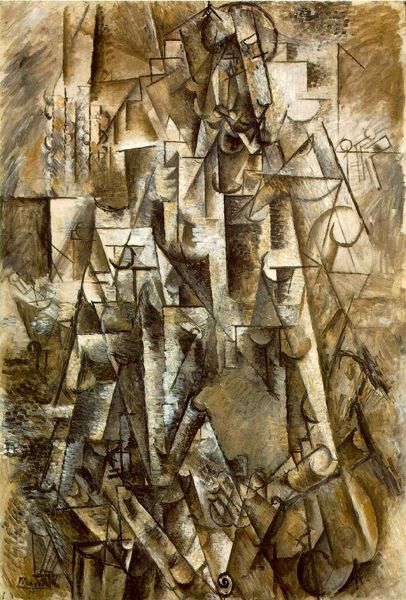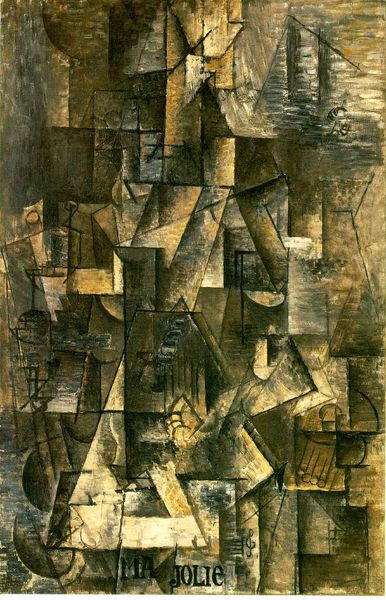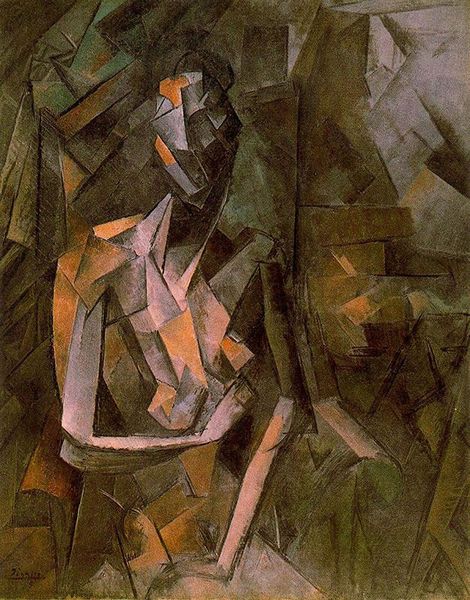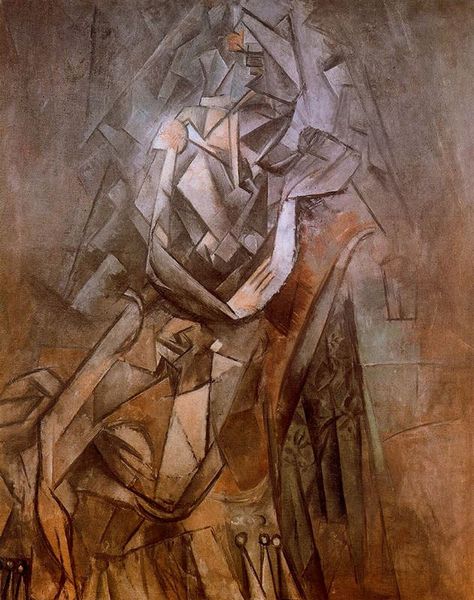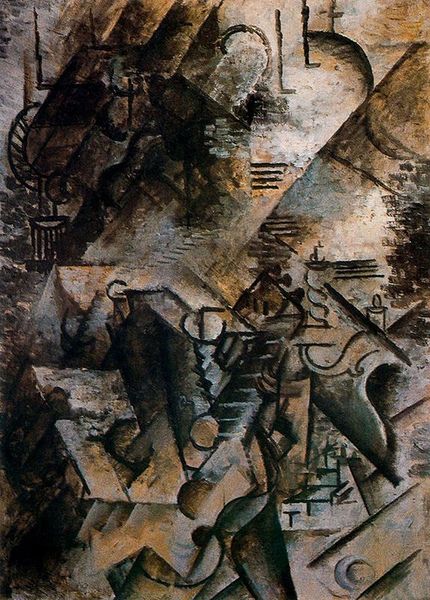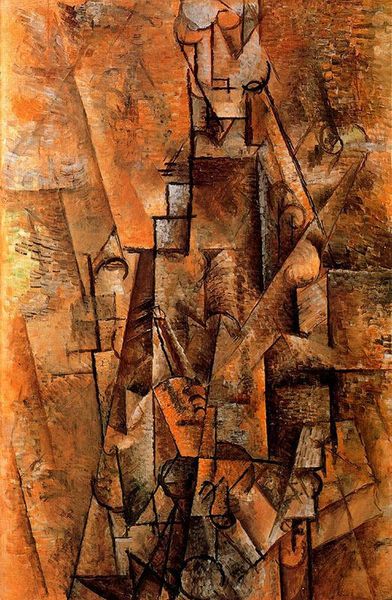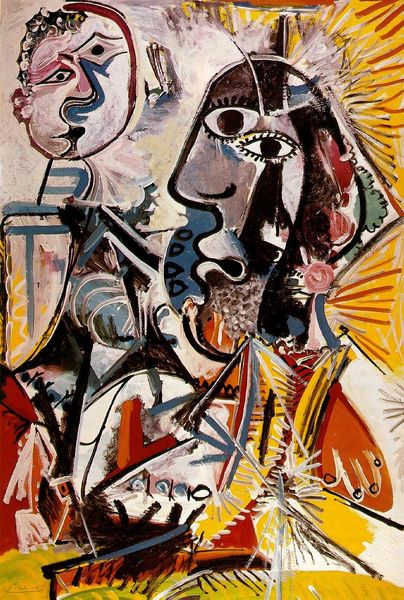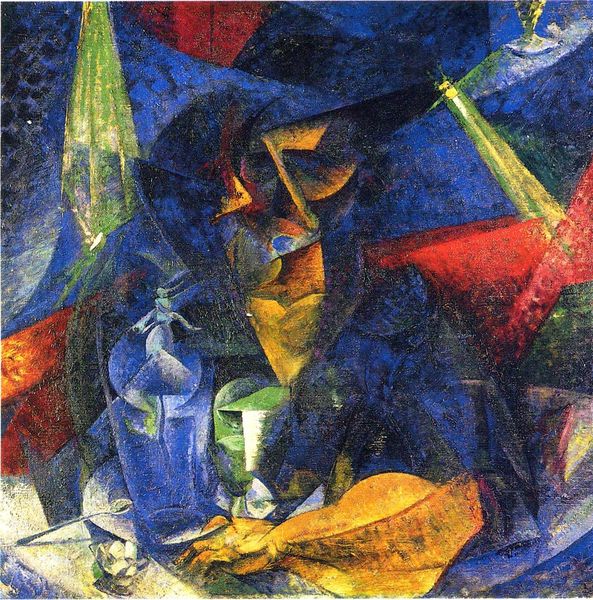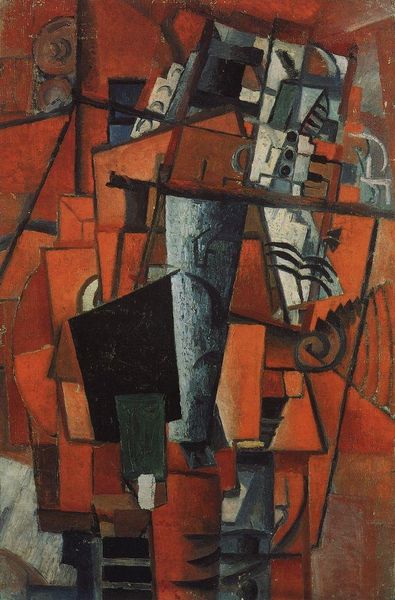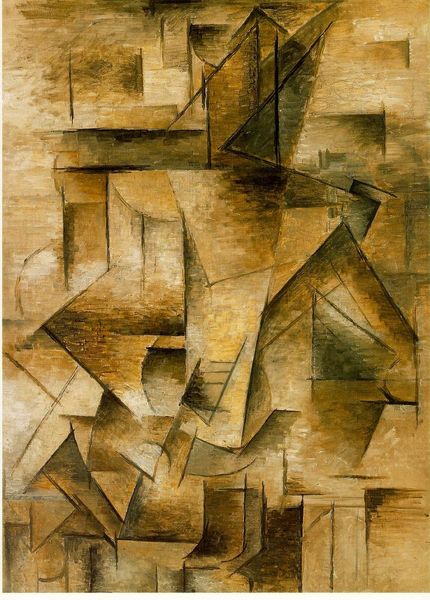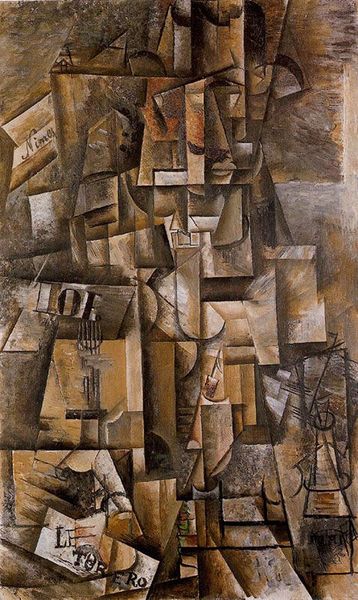
painting, oil-paint
#
cubism
#
abstract expressionism
#
painting
#
oil-paint
#
geometric
#
abstraction
#
abstract art
Copyright: Carlo Carra,Fair Use
Editor: Here we have Carlo Carra’s painting *Quirinal Stables*, which appears to be an oil painting. It is incredibly abstract, with shapes and forms battling for dominance on the canvas. What do you see in this piece? Curator: What strikes me most is the fragmentation. Consider the historical context: Carra was deeply involved in Futurism and later Metaphysical painting, both movements reacting to a rapidly changing world marked by industrialization, war, and social upheaval. The fractured forms—do you notice how they almost seem to clash? I see that as a reflection of a society itself fractured along class lines, ideologies, and the trauma of World War I. Does the lack of clarity itself feel communicative of anything? Editor: Yes, actually, I think that makes a lot of sense. The abstraction doesn’t seem random; there's a sense of… purposeful disruption. Do you think the title is ironic? Are we really looking at "stables," or something else? Curator: Absolutely. It's about disrupting the viewer's expectations, refusing a passive consumption of art. "Stables" becomes a site where traditional hierarchies are questioned. It compels us to reconsider what is considered of value, in art and society. Look closely. Where do you see hints of representation? Where does it break down into pure form? Editor: Now I'm beginning to see suggestions of architectural structure beneath the abstract shapes. It's like Carra is deconstructing not just a building, but the very idea of order itself. Curator: Precisely. This destabilization serves as a potent reminder that even the seemingly solid foundations of our world are subject to questioning and transformation. Art becomes an invitation to join in that process. Editor: I’ve never thought about cubism in such social and political terms. That really changes my understanding of the painting. Curator: Art provides critical lens.
Comments
No comments
Be the first to comment and join the conversation on the ultimate creative platform.
